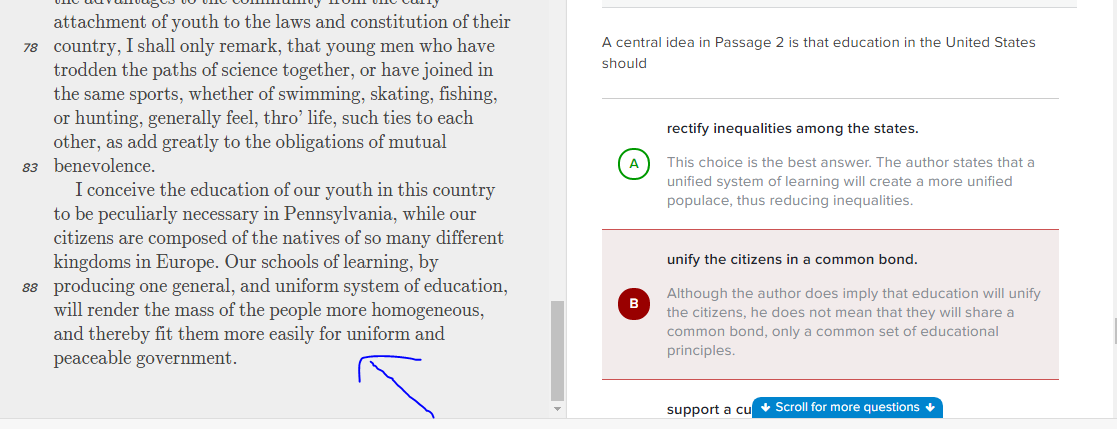No, making the states more equal does not necessarily unite them in a common bond ... but that's actually irrelevant to the question. This is a fairly difficult question of reading comprehension which asks you to rephrase what the writer says in the given passage, and nothing else. These sorts of questions are common in college entrance exams like the SAT, and various graduate and professional school entrance exams.
Assuming that they are properly written, be aware that there is only one correct answer to these questions. Other answers may seem reasonable, but you are to pick the answer that best addresses the given question.
Here is a related and somewhat more difficult example:
During the construction of the Quebec Bridge in 1907, the bridge’s designer, Theodore Cooper, received word that the suspended span being built out from the bridge’s cantilever was deflecting downward by a fraction of an inch (2.54 centimeters). Before he could telegraph to freeze the project, the whole cantilever arm broke off and plunged, along with seven dozen workers, into the St. Lawrence River. It was the worst bridge construction disaster in history. As a direct result of the inquiry that followed, the engineering “rules of thumb” by which thousands of bridges had been built around the world went down with the Quebec Bridge. Twentieth-century bridge engineers would thereafter depend on far more rigorous applications of mathematical analysis.
Which one of the following statements can be properly inferred from the passage?
- Bridges built before about 1907 were built without thorough mathematical analysis and, therefore, were unsafe for the public to use.
- Cooper’s absence from the Quebec Bridge construction site resulted in the breaking off of the cantilever.
- Nineteenth-century bridge engineers relied on their rules of thumb because analytical methods were inadequate to solve their design problems.
- Only a more rigorous application of mathematical analysis to the design of the Quebec Bridge could have prevented its collapse.
- Prior to 1907 the mathematical analysis incorporated in engineering rules of thumb was insufficient to completely assure the safety of bridges under construction.
The emphasis on "properly inferred" is mine. All of the answer choices are reasonable, but only one is best supported by the information in the passage. In order to answer this question, you have to learn to judge based only on what you read, and not what you assume is true, or know to be true from other sources.
Here is the answer (mouse over to view). Don't peek until you've had a chance to think it through and make a guess:
The correct answer here is #5. The other answer choices introduce additional assumptions or draw unsupported conclusions. Only #5 is completely supported by what is in the passage: the previous mathematics used were not rigorous enough to ensure safety for all bridge construction projects

